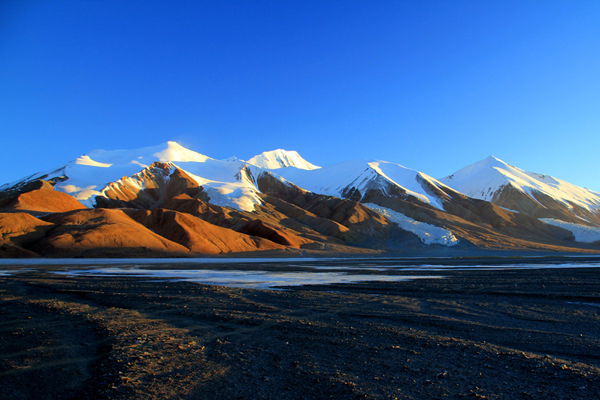Dam proposed to address soil, flooding risks


Experts say plan would also help protect Tibetan antelope in remote Qinghai
Chinese environmental engineers and activists are advocating the construction of a dam to prevent the loss of frozen soil in the Hoh Xil National Nature Reserve in Qinghai province, an isolated region in the northwestern part of the Qinghai-Tibet Plateau that was added to UNESCO's World Heritage list in 2017.
The proposed dam would be near the reserve's Zunai Lake, a major breeding area for the Tibetan antelope, said Lu Shanlong, a researcher at the China Biodiversity Conservation and Green Development Foundation and a professor at the Chinese Academy of Sciences' Aerospace Information Research Institute.
Lu, a wetlands expert, conducted a weeklong field study in the reserve in January, together with eight researchers, environmentalists and representatives of the reserve's administrative body. That study led to the dam proposal.
Lu said the dried-up floor of Zunai Lake-which was laid bare after the lake burst its bank in 2011-has become a main source of sandstorms, which in turn wreak havoc on the region's delicate and vulnerable ecology.
The proposed dam would help raise the lake's water to its original level and submerge its sandy rim, ultimately helping to rein in the sandstorms.
Lu said remedial action is urgently needed because of coming water runoff.
"If we fail to act in time, the coming summer could make Zunai's discharge opening bigger and pose a great challenge downstream," he said.
The Hoh Xil area has become warmer and wetter since the 1960s, which led to a significant expansion of Zunai Lake before the breakout eight years ago, according to experts.
The breakout followed heavy precipitation from May to September in 2011, and two earthquakes in the region two months earlier were suspected of triggering the collapse of the lake's bank.
The breakout led to loss of soil in the exposed lake bed and the expansion of three downstream lakes -Qusay, Haidingnuoer and Salt.
Those lakes' rising water levels have posed a danger to the Qinghai-Tibet Railway, the highway and residents further downstream. Migration routes of Tibetan antelopes near Qusay Lake are also at risk of being cut off.
Zhou Jinfeng, the foundation's secretary-general, said the dam would regulate the amount of water rushing downstream and minimize such risks.
Qu Jianjun, a professor at the academy's Cold and Arid Regions Environmental and Engineering Research Institute, said sand control in the region is important because three rivers, including the Yangtze, China's longest, originate there.
"It is also the delivery room of the Tibetan antelope, and we cannot afford to let it develop on its own," he said, adding the project would be a good form of human intervention.



































